I thought I’d like some songbirds to call my own. Now that I have a patio, I thought I could hang their cage outside, under the shady eave, and they could sing for me.
I thought I’d get a beautiful birdcage, one of the many handmade, hand-painted cages available here at San Miguel de Allende’s famous artisanal mercado:
And I’d buy little songbirds at the Tuesday tianguis (large, open-air market), if and when such birds were available for sale:
But then…
I thought better of it. The old sense of empathy kicked in. Caged? Owned? Who wants that? Certainly not I. So why should I inflict such torture on any other creature?
Instead, then, I decided to buy a feeder to hang out on my patio – a lovely, blue glass hummingbird feeder – at a local specialty shop called Camino Silvestre (literally: “wild journey”):
“I live in a penthouse apartment,” I jokingly told the shopkeeper. “Will the hummingbirds fly that high?”
“They will go wherever the nectar is,” she assured me.
The nectar she referred to (for those who are new at feeding hummingbirds) is a homemade sugar solution (4:1 ratio – water to sugar). And, sure enough, she was right. No sooner had I hung the nectar-filled feeder on my “penthouse” patio than I had thirsty little visitors, darting and whizzing around (and hard to photograph, I soon found, at close range):
I sit quietly on my small patio, stock-still, pretending I’m just another potted geranium, and I observe my winged little visitors zooming in and out. The vocal sounds they make, I’ve discovered, are not hums – they’re more like chirps, chatters, squeaks and squeals (especially when they’re fighting over access to the feeder). The humming sound they’re named for is not, it turns out, an expression of their feelings, it’s a result of their aerodynamics: It’s the sound their wings make, flapping at an eye-blurring rate of between sixty and two hundred times per second.
They’re small, no bigger than my thumb (the smallest birds of all, I learn from research, and the only birds capable of flying backwards), with long, thin, red, needlelike beaks. The ones that visit me come in all sorts of shiny colors – greenish, bluish, reddish, grayish-brown – some with white breasts and some not. Sometimes, to my great relief, they perch on the feeder and take a deep breath before zipping away to God-knows-where:
Every story, fiction as well as non-, requires an antagonist to create and maintain tension. So here we go:
Who should arrive on this idyllic patio scene the other day but El Gato (my name for him — or is it her?), a scruffy, smelly, old, homeless cat who hangs out at this apartamento complex (where no dogs are allowed); who answers to no one and is fed (judging from the empty small bowls and saucers outside many apartment doors here) by just about everyone.
El Gato has decided – and I really can’t blame him for this – that my sweet little patio is the place to be. He has found a back way, over the brick wall, into it. When I’m out there, he cuddles beside me and purrs loudly. When I’m not there, he stretches out beside the potted plants and snoozes in peace and safety:
At first his obvious presence was off-putting to the hummingbirds. In less than a twinkling, they took one look at this potential predator and nixed the free-nectar idea. (How quickly their tiny little brains work, I marveled.) They darted off. My heart sank.
But then the birds and I seemed to make the same discovery at the same time: El Gato is either so well fed by the well meaning residents here that he’s not interested in chasing down and eating hummingbirds for lunch, or he’s so old that he’s deaf to the hummingbirds’ squeaky-chirpy sounds — or both. He pays no attention to them – doesn’t lift or turn his head, doesn’t even cock an ear — so they quickly learned to ignore him.
Now we’re all happy – the birds, the cat, and I too. None of us is owned by anyone. All of us are free to come and go as we wish. The lesson for me is it’s always good to question widely accepted assumptions. In this case, I’ve been reminded once again that ownership does not equal happiness. And I’ve also learned something new: hummingbirds not only don’t sing, they don’t even, really hum.

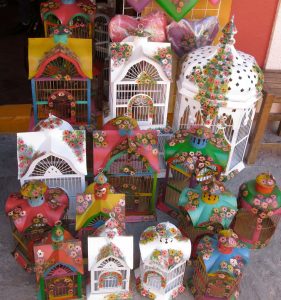
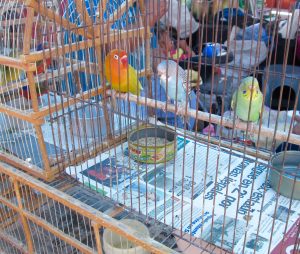
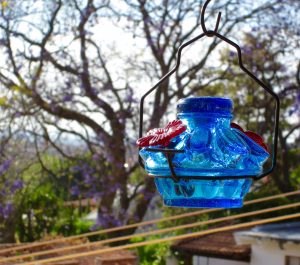

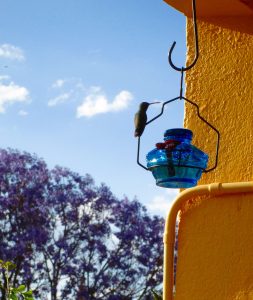
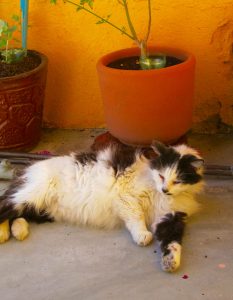
“None of us is owned by anybody.” Love that!
Thank you, dear Arti. Yes, you got the whole point. 🙂
Wonderful. Storytelling at its best….I loved the three protagonists: what a combination: a woman, little birds, and an old cat. Somehow the whole thing is very Mexican….live-and-let-live…..free-to be….wrapped in the colors and sounds of San Miguel….just lovely!
Thank you, Pamela dear! Yes, you know how it is — the colors, the sounds, the flavors, the live-and-let-live tolerance and acceptance. How fortunate we are to be here now.
After reading the first 3 paragraphs, before scrolling on down the page, I was taken aback by the image of you even considering caging a pet, Bonnie! But once I scrolled on, you of course came to your senses immediately… and once again I was enthralled with your story-telling.
I do hope you can find out from someone what species of hummingbird you have done there. Is it one that will soon be flitting around our feeders in el norte Nuevo Mexico?
Glad you kept reading, Jan! 🙂 I’m not sure what kind of hummingbirds I have here; but I have a friend who’s an ornithologist who reads my blog, so maybe she’ll enlighten us. Hope so!
Oh Bonnie, How I loved this!….First I thought, next time I visit you , I won’t even have to go to the end of the street to watch birds and then you gave me news from our kitty friend El Gato.
Bonnie, you write so well, I was almost there with you…
Ma chere M-L — I thought of you this morning when a few big, white egrets flew past my window. Yes, when you next come for a visit you’ll love the fact that this apartment is so much closer to Nature. — xx
So happy El Gato has been accepted by all! BTW there is a town in Michoacán called Tzintzunzan–it is meant to mimic the sound of the hummingbird. Musical!
Ah, Suzanne, if I had only known this, I would have titled my post Tzintzunzan! It’s perfect! Gracias!
I don’t have feeders but instead have pots of mandevilla salvia, and other flowers that attract hummingbirds. They are not migratory as they are here day in and day out, depending on what is blooming. In addition, you might notice that they come at almost the exact same time on a daily basis! Amazing creatures……Another FREE gift from Nature living in this special place. Enjoy.
In Taos, where I lived before coming to SMA, we only saw hummingbirds in the summertime; it’s nice to know they’re year-round here! Thanks for pointing this out, Babs.
Of course I related to the story of El Gato, as you might expect. Until I read on, I thought that was a drop of blood in front of his/her paw! Happy to read the story’s happy ending!
Ah, yes, Barb — I almost included a paragraph about your very own hummingbird-hunter Griffy! This cat, however, remains bizarrely oblivious to the hummingbirds. Even now as I type this, El Gato is stretched out on the patio ledge, asleep, while the hummingbirds come and go.
Happily for me, I think Griffy has outgrown his interest in killing birds. Or maybe he’s just too fat of a cat to jump for them anymore.
That’s good news — especially for Taos’s hummingbird population! 🙂 Yes, I’m guessing hummingbird hunting is for the young and lithe cats of this world.
William Blake: “a robin redbreast in a cage, puts all heaven in a rage.” Thanks, you voiced my own ambivalence, when I see/hear birds, especially in a small cage, I think of freeing it, or I want one too, maybe it’d be ok if I got a lot bigger cage. On the other hand there are so many new-for-me wonderful sounding birds like here in Guatemala, that I can hear for free without chaining them, I relax and savor them.
Thank you, Dyane, for your perspective from Guatemala! Great to hear from you. I hope you’re loving life there. Please stay in touch, BB